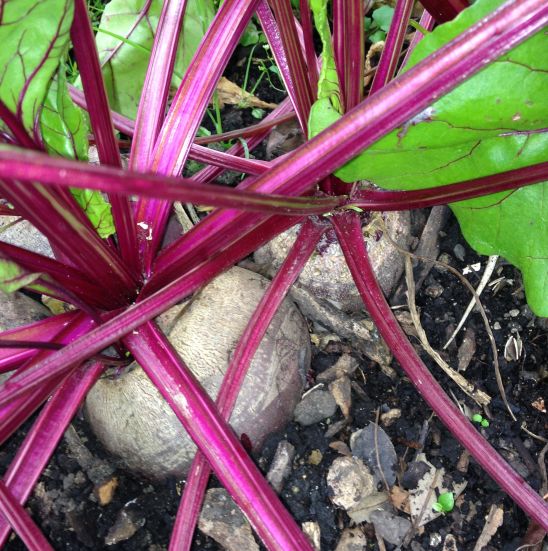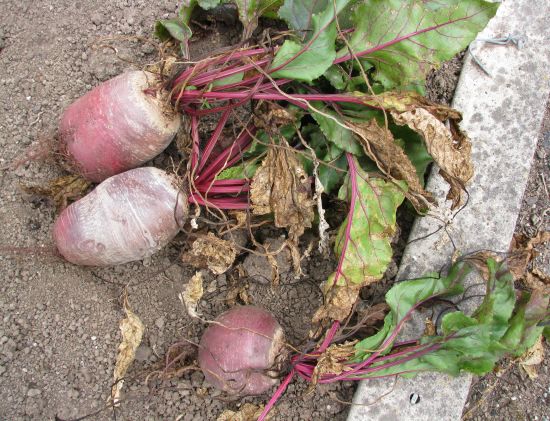
Unlike other root veges like carrots or potatoes, beetroot produces a crop very quickly. Within three weeks of sowing, young plants are producing leaves for salads; within five weeks, you can harvest baby beetroot to cook whole; and usually within eight weeks you can harvest regular-sized beetroot for roasting, salads and juicing.
Beetroot can be an exceptional source of essential vitamins and minerals. It depends of course if your soil has the nutrients in it for the uptake. If it does, beetroot can be rich in calcium, iron, magnesium, potassium, vitamin C, thiamin, riboflavin, vitamin A and vitamin K. Much of these nutrients are stored in the leaves, so don’t forget to use young leaves raw in salads and older ones as you would silverbeet. Amazingly, beetroot has twice as much natural sugar as corn, carrots or tomatoes which is why they’re so good in juices.

Being a root vegetable it’s best to sow the seeds directly into your soil. Transplanting does work, but only if there is no root disturbance. Spring is the ideal time to start sowing.
A crop will grow best under cool, moist conditions but, once well-established, will tolerate hot summer weather well, as long as the soil has sufficient moisture for even, steady growth. Beetroot is also quite cold-hardy. They can go into the ground during your first early spring plantings, and the plants can remain in the garden until after autumn. Beets remain undamaged even when temperatures are freezing.
Beetroot, like all root vegetables, responds well to a good dose of potash, so either mix up a solution of sulphate of potash and wet the soil before sowing seeds, or sprinkle a little fireplace ash around after sowing. Too much compost or manure will only end up in lots of leaf growth, but an organic seaweed-based fertiliser is beneficial, or dig in a good supply of seaweed or kelp before sowing seeds.
Beetroot seeds are quite big and usually germinate well so be sparing with them. You’ll need to thin seedlings out once they’re about 5cm high. Just imagine how big a beetroot grows to know how much space to leave between the plants.

Website designed by www.thecornerstorecollective.com
Developed by Richard Hpa